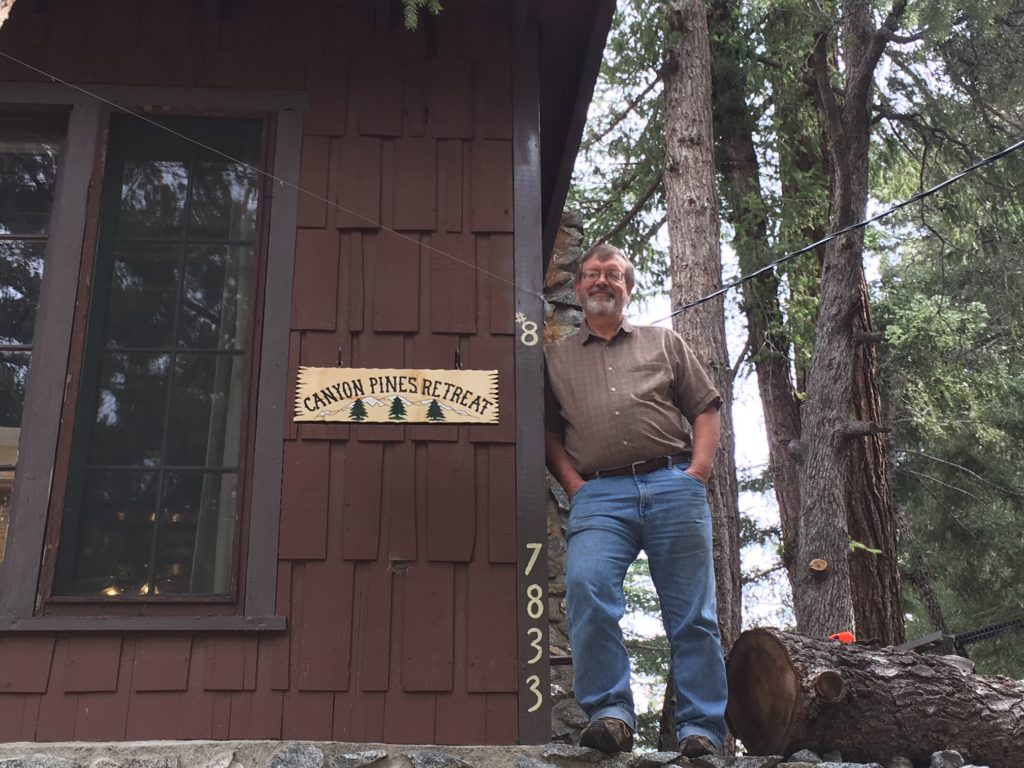
We are excited to welcome Dr. Mark McReynolds as he begins a new A Rocha USA project in Southern California. We caught up with him to hear more of his story and vision for this project.
In a few sentences, tell us about your place. Who is there? What are the needs and hopes where you are? Why this place?
Aside from industry and jobs, there’s a reason why the LA area (aka SoCal) has so many people: the climate and the beauty all around us. Beaches are close, with Channel Islands National Park not so far out there. There are several mountain ranges and three peaks over 10,000 ft. Beyond the mountains are both high and low elevation deserts – think Joshua Tree National Park. The geographical diversity produces natural biodiversity and that is mirrored in the cultural diversity of the region.
Do we have needs here? Yes. Smog is still an issue. Environmental injustices are common with poorly regulated factories churning out products and byproducts that harm minority neighborhoods. The wild spaces mentioned above are negatively impacted by these byproducts too.
SoCal is home to many Christian universities and has many churches. Why do environmental ministry here? I grew up hiking the mountains. Now I live here and so do almost 4 million other souls.
What are your project’s goals and vision?
We train leaders to start collaborative, community-based conservation activities to restore both people and places, and we have specialized programs that we lead.
Our training includes Creation Care Camp, Junior Rangers Club (an afterschool program), and leader meetings to provide community for creation care leaders in local churches
In addition, we lead conservation projects both on our own and through partnerships with local groups, Church in Creation formation experiences, EcoMissions trips, and Birding with a Mission trips. We also provide speaking and special events. I particularly enjoy exploring the territory between Christianity and conservation.
Why is this project important to you? How did these passions first show up in your life? What first drew you to conservation work? How did you first connect with A Rocha USA?
I became interested in the natural world through proximity to the San Gabriel Mountains –the backdrop to my life from 2nd grade through high school. God took my interest in hiking and rocks, morphed it into a BS in Natural Science, and added ministry prep via seminary. Then he placed me in camp ministries where people and creation mix but the focus is on people.
I was excited to find out about Christian environmental organizations, and I spent four years running a field station for one in Belize. In that time, I heard about A Rocha. While teaching university, I was invited onto the USA board. I loved the 30,000 ft. view of the board and am now ready to get out of academia and down in the low elevation trenches.
What change do you hope to see from your project?
I’m just starting, and God knows much better where I’ll be in 5 years than I, but I’d like to use my environmental education, university teaching, research, and seminary skills to show that God is mighty concerned about people and place – in this place – and everyone, especially Christians, must be also.
What do you think will be the hardest part of this project?
Many sincere Christians have bought the lie that God is uninterested in the environment. Aside from God’s example, it’s quite clear that treating the rest of God’s creation well is actually self-preservation for ourselves and our near, far and generational neighbors.
Another difficulty is that any nearby natural areas are highly managed due to very large numbers of weekend hikers; off-trail use is frowned upon or cited, and, in theory, any group activity requires a permit. I’d love to have our own big house on 40 acres next to federal or state land and/or one in the thick of LA’s environmental injustices.
What books are you reading right now?
My two currents reads are Rewilding the Way: Break Free to Follow an Untamed God by Todd Wynward, a Mennonite Ecopastor, and Walking on Water: Reflections on Faith and Art by Madeline L’Engle.
What is your favorite breakfast cereal?
I have loved imported Swiss Muesli in the red box since I was a kid, but I usually have plain ol’ oatmeal with homemade soy milk, added fiber, and 70%+ chocolate bits (all usually organic).
What else are you doing?
I’d love to focus solely on A RochaUSA in SoCal, but I’m “tentmaking” with other projects too, some of which I’d like to pay bills with. I’m also working through the official process to be an unpaid Ecopastor with the Mennonite Church in this region.








are you planning any activities in Ventura County?
Hi Gail,
That’s possible. I have other ministry/work in Ventura as well and with good planning could spend a weekend up there doing a Saturday activity with a group you collect to clean a beach or ????? and then preach at a church (or two? on Sunday on Biblical Reasons Why Christians Should Take Care of God’s Creation. Let me know and I’ll contact you offline as well. Mark McReynolds Dir. SoCal A Rocha